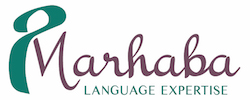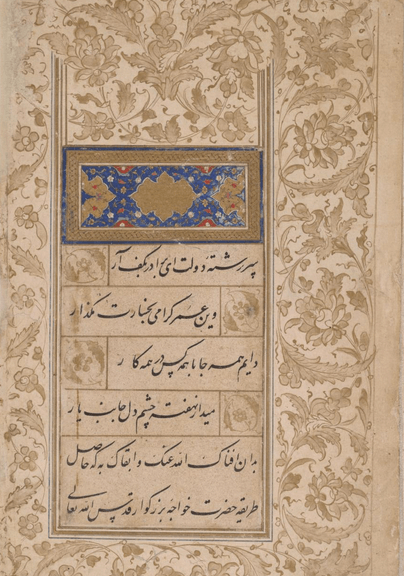Cultivating the Pleasure of Extensive Reading in Arabic (Part 1 of 2)
In the current climate, audio and video sources are on the rise, but reading remains a key skill for language learners. For those learners who already love to read (in any language), extensive reading can be a powerhouse for their progress toward increased proficiency in Arabic. This 2-part series is based on research in language teaching, with a focus on learners of Arabic whose L1 (first language) is English. It is intended for both educators and learners of Arabic (whether in a classroom or in an independent learning environment).


Introduction
What makes a successful reader? The reader must be able to interpret at least one meaning from a piece of writing. In addition, those who read extensively and frequently will be most likely to form meaning from writing. Finally, people are more likely to read extensively and frequently when they find reading pleasurable. These basic characteristics of a successful reader make a tall order: How can learners take pleasure in frequently extending their reading, and improving their ability to find meaning in texts? At first glance, pleasure may seem antithetical to frequent, extensive reading. And both pleasure and frequency are probably eclipsed by most foreign language learners’ focus upon meaning. The more reading for language practice resembles (and becomes) reading for pleasure, however, the faster reading abilities will grow, leading to improved overall language proficiency. This series investigates how to enjoy reading more extensively, frequently, and meaningfully to improve overall proficiency in Arabic.
Theoretical Developments
Most of the history of teaching reading focused more on idealized structure of language than on its real-world functions. Reading techniques consisted largely of rote memorization and reading aloud. [Reading aloud, though beneficial for pronunciation and word recognition, does not provide the best opportunities for construction of meaning. See Brustad, “Reading Fluently in Arabic,” Handbook for Arabic Language Teaching Professionals (Mahwah, NJ: Erlbaum, 2006) 342.] Yet the language teaching profession in the United States began a period of deep reevaluation in the mid-twentieth century. Driving concerns included dwindling enrollment in foreign language classrooms and low proficiency rates among foreign language learners. Following an experimental period of searching for the most effective teaching method, instructors have by and large come to the consensus that no single method will meet the needs of all language programs and learners. Instead, most approaches are eclectic and pragmatic, attempting to learn from the past and apply the results of current research to the specific needs of language learners. The alterations in language paradigms have led to “authentic input / language creation,” instead of “normative input / language replication.”[1] In today’s atmosphere of interactive, communicative approaches, reading is understood as the real-world task of extracting meaning from writing. It is closely connected to other language skills (e.g. writing, speaking, listening, and cultural knowledge), and thoughtful, intentional use of all these skills now characterize proficiency-based language instruction.
The 1970s brought several key developments to the research and theory of the process of reading. Bottom-up and top-down processing, articulated by Goodman’s (1970) work, describe the reader’s attention to both form and content. Meaning rests on the intricate details of language mechanics, as well as the overall concepts conveyed in texts. Effective readers process meaning on both levels simultaneously. Schema theory emphasizes the importance of background knowledge in the process of reading. Far more than simply recognizing words, the effective reader brings a significant amount of knowledge and experience to the text in order to find it most meaningful.
By the 1990s, affect proved a significant factor in language acquisition.[2] Self-esteem (Dole, Brown & Trathen) and autonomy (Bamford & Day) are powerful motivators toward reading and increasing fluency. Researchers (Krashen, Bamford & Day, Green & Oxford) have found extensive reading—characterized by high quantity, manageable difficulty, and minimal dictionary use—integral to the development of autonomy and to the most powerful motivation: pleasure. Students who read regularly for pleasure will naturally develop high levels of literacy.
Motivations for Reading Arabic
The key in reading is to relate it to ordinary language use. What is the role of reading in the life of an Arabic learner? Reading plays a larger part in the life of the language learner than one might expect. The very aspects of texts that may seem at first linguistic or cultural barriers are the same aspects that will allow learners to progress in comprehension. After all, one of the main reasons for reading in any language is to increase our knowledge and to understand other people’s ideas. Building on this basic curiosity helps language learners to make their own discoveries and to better comprehend Arabic language and culture.
Instructors will benefit from familiarizing themselves with their students’ general interests and their motivations for studying Arabic. For best results in extensive reading, students will need a relatively high level of comprehension, and thus benefit most directly from material that is both familiar and appealing.
[1] Swaffar, Reading for Meaning (Englewood Cliffs, NJ: Prentice Hall, 1991) 8.
[2] For more on affect in reading education, see Cramer & Castle, Fostering the Love of Reading (Neward, DE: International Reading Association, 1994).
Stay tuned for Part 2 next week! If you are a learner of Arabic interested in a coach for your reading, keep me in mind. If you’re looking for a reading community, consider the MENA Lit Group at goodreads.com .




